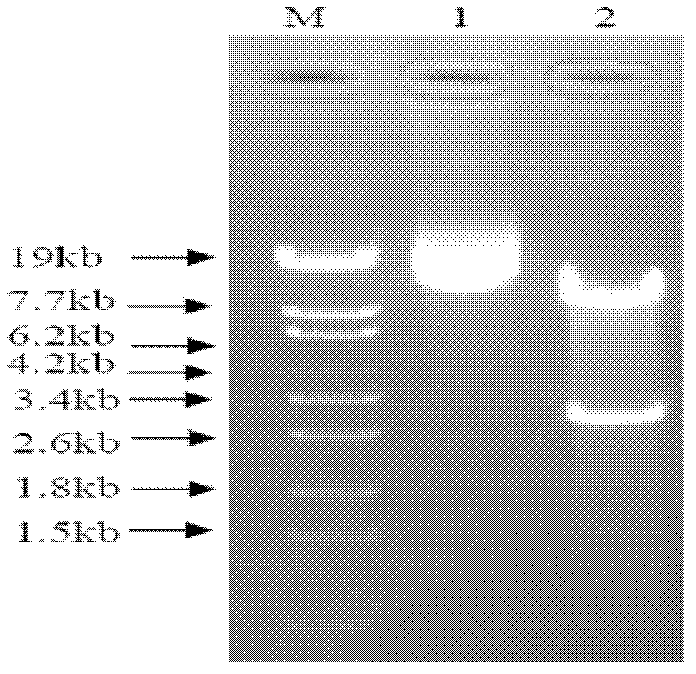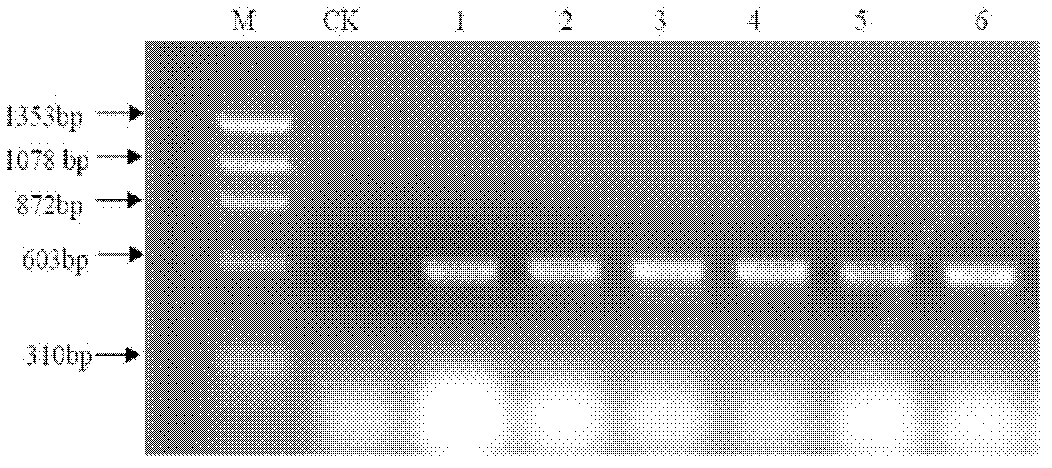Method for controlling soot lice by silencing two resistance genes
A resistance gene and gene technology, applied in botany equipment and methods, using vectors to introduce foreign genetic material, angiosperms/flowering plants, etc., can solve problems such as reduced sensitivity to pesticides
- Summary
- Abstract
- Description
- Claims
- Application Information
AI Technical Summary
Problems solved by technology
Method used
Image
Examples
Embodiment 1
[0034] 1. Construction of RNAi vectors with CYP6CM1 gene and coe1 gene as target genes
[0035] (1) Select the CYP6CM1 gene (Iris Karunker, Juergen Benting, Bettina Lueke, et al. Over-expression of cytochrome P450 CYP6CM1 is associated with high resistance to imidacloprid in the B and Q biotypes of Bemisia tabaci (Hemiptera: Aleyrodidae). Insect Biochemistry and Molecular Biology, 2008, 38:634-644) and coe1 gene (Alon M, Alon F, Nauen R, et al. Organophosphates′ resistance in the B-biotype of Bemisia tabaci (Hemiptera: Aleyrodidae) is associated with a point mutation in an ace1-type acetylcholinesterase and overexpression of carboxylesterase.Insect Biochemistry and Molecular Biology, 2008, 38: 940-949) is the RNAi target gene, and Overlap PCR primers F1 / R1 and F2 / R2 were designed according to its sequence:
[0036] F1 ATGGCGGCAGCTATTGACA
[0037] R1 GTTTGGCTTGAACCTGGATGGGATGCCAGAAAATCA
[0038] F2 TTCTGGCATCCCATCCAGGTTCAAGCCAAACTCCA
[0039] R2GCCATACTTTTTCAGCAGGCT
[0040...
PUM
 Login to View More
Login to View More Abstract
Description
Claims
Application Information
 Login to View More
Login to View More - R&D
- Intellectual Property
- Life Sciences
- Materials
- Tech Scout
- Unparalleled Data Quality
- Higher Quality Content
- 60% Fewer Hallucinations
Browse by: Latest US Patents, China's latest patents, Technical Efficacy Thesaurus, Application Domain, Technology Topic, Popular Technical Reports.
© 2025 PatSnap. All rights reserved.Legal|Privacy policy|Modern Slavery Act Transparency Statement|Sitemap|About US| Contact US: help@patsnap.com



